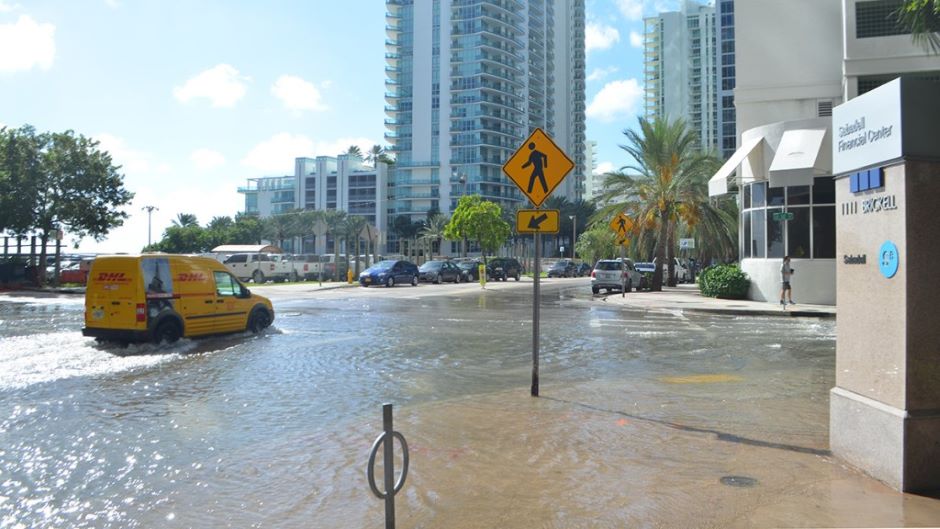Researchers at the University of Miami and University of California, Irvine were awarded a $1.5 million National Science Foundation grant to make flood risk adaptation faster and more effective to address rapidly escalating flood risks and social inequities in decision-making processes.
The three-year project funded by NSF’s Smart and Connected Communities program will focus on Miami-Dade County, where extreme flooding during hurricanes and chronic inundation from high tides and rising groundwater levels present major risks. The project will bring together experts in civil engineering, adaptation sciences, and regional planning and be carried out in partnership with the South Florida Water Management District, Miami-Dade County and the Miami Foundation.
“To date, our potential flood futures—scenarios of how we respond to escalating risks—have been available to just a few decision-makers,” said Katharine Mach, professor and chair of the Department of Environmental Science and Policy at the University of Miami Rosenstiel School of Marine, Atmospheric, and Earth Science. “Our goal in this project is to transform flood modeling technologies so everyone can explore their options and see how that impacts preferences and plans for the future.”
The project will develop and test a new flood simulation technology to help climate adaptation be more time-sensitive, equitable, and effective, which is also relevant for other climate hazards such as wildfires, heat, and air pollution. The Parallel Raster Inundation Model (PRIMo) enables rapid, region-wide modeling of flooding scenarios at household resolution, enabling stakeholders to both individually and collectively explore the benefits and drawbacks of potential flood response measures including social inequalities. A recent application of PRIMo in Los Angeles by the regional team highlighted risk levels far higher than suggested by federally defined flood zones, with inequalities in exposure among social groups, and also enabled an action plan by local governments to address these flood risks and their inequities.
“Detailed flood modeling helps communities and stakeholders immediately see the potential impacts of flooding—and how the impacts will change under different climate change scenarios and response options such as flood walls, pumping, and restoration of floodplains,” said Brett Sanders, professor of Civil and Environmental Engineering, Urban Planning and Public Policy at the University of California, Irvine. “In this project, we will leverage the speed and interactivity of PRIMo so all stakeholders, including those from historically overburdened groups, can independently explore possible flood risk responses and more effectively achieve desired solutions within applicable policies, community goals, and available budgets.”
Researchers expect to gain fundamental insights into how simulation technologies can best be used within decision-making processes to equitably address flood risks, new science that could be used globally to aid in climate adaptation.

